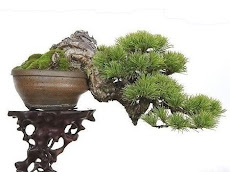Growing your own indoor bonsai plant is not too hard, once you understand the basic concept of the unique technique used to cultivate these trees. The aim of growing the bonsai tree is to recreate the appearance of a natural tree, in a miniature form.
The Indoor bonsai tree is slightly more difficult to grow than the outdoor type. Essentially, in their natural state, trees are grown outdoors. For this reason, when you are growing an indoor tree, there will be more challenges. To successfully grow the indoor bonsai tree, you must pay special attention to the tree’s environment, including soil, water and light.
There are a lot of different types of trees, and each one of these require their own type of unique care. Though there are many species of the plant, these trees can be placed into three categories. There is the tropical, the sub-tropical, and the temperate bonsai.
From these categories, the tree is then divided again into two sub-categories; those that lose their leaves during the fall and winter, and the indoor bonsai tree that keeps its leaves throughout the entire year.
One of the most important aspects to growing the indoor bonsai tree is light. You will need to ensure that your tree has adequate light at all times. An alternative to natural lighting for your indoor trees is fluorescent lighting. Fluorescent lighting does not give off heat like traditional lights do; therefore it will not dry out your tree.
When using artificial lighting, you will need to adjust the amount of time the lighting is turned on to simulate the natural changing of the seasons. For instance, in the fall you will want to reduce the amount of time the lighting is on, reducing it even more for winter. As spring and summer approaches, you will again, gradually increase the time the lighting is on.
Other important considerations of growing the indoor bonsai tree include, paying attention to the type of soil that you use, as well as watering, and pruning. If you plant your tree in fertile soil, you will likely not have to add additional fertilizer for three or four weeks. Watering should be done according to the type of plant that you are growing, but generally, you will want to keep the tree fairly moist through the spring and summer, but can slightly reduce the water during the fall and winter months.
Before you attempt to grow your own indoor bonsai tree, learn as much as you can about the type of tree you intend to grow. If you start out knowing what you need to do to be successful, your chances of growing the perfect bonsai tree will be much better.
Article Directory: http://www.articlecube.com
Enjoy awesome Indoor Bonsai info and awesome Bonzai info.
Enjoy




No comments:
Post a Comment